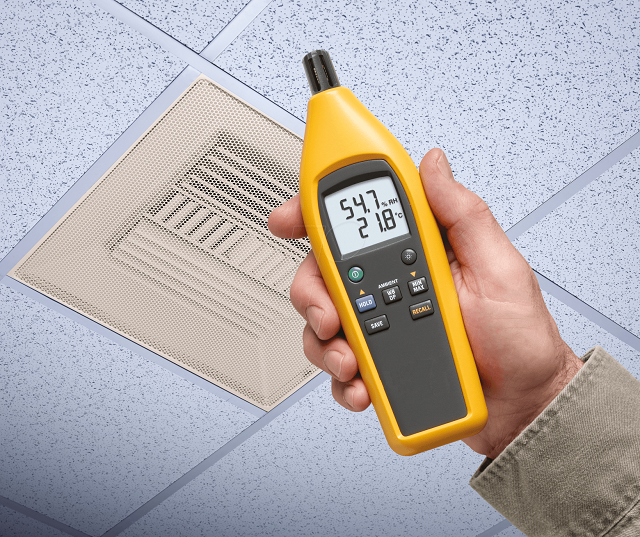What exactly is humidity? Humidity is the amount of water vapour or moisture that is present in the air around you. When you talk about relative humidity, you are referring to the ratio of moisture in a given volume of air at a certain temperature. This also means the most vapour that particular amount of air can hold converted into a percentage. For example, if the reading states 40% relative humidity it means that there is 40% saturation present in that current air. This can easily be measured with a digital humidity meter.

There are a few do’s and don’ts you should follow when it comes to measuring humidity with a digital humidity meter. The do’s include making sure you use a reliable digital humidity meter. Also, make sure the meter you are using hasn’t been exposed to any extreme conditions or hasn’t been contaminated. Have the instrument calibrated – you should allow the instrument to reach the temperature of the location even if it takes some time. You want to give it time so the reading can stabilize so it’s accurate. Record your results and check the percentages (we will refer to them below). Make sure you take notes of any differences that occur in your environment.
The don’ts include handling any of the humidity sensors to roughly. Don’t try and use the meter in temperatures that the manufacturer has clearly stated not to. Don’t expose the sensors to condensation or anything that they can’t tolerate. Remember to always follow the manufacturer’s instructions for the best and most accurate reading.
So how does humidity effect you and why is it important? If we feel cold or hot, it all comes back what rate moisture is being evaporated from our bodies. When it’s summer, evaporation goes slower as there is so much humidity already in the air so this makes us feel hot and sticky. When it’s cooler outside and the air is dry, evaporation can happen quickly so it might make us feel a bit chilly. The temperature inside your home can be at the same level but feel differently at different times of the year. For example, in winter one temperature might make you feel colder because the air is dry as compared to in summer at the same temperature.
It is important to keep an eye on what temperature it is outside so you know how much humidity you should have inside your home. Below we’ll go over some measurements so you know at what levels you are most likely to be comfortable.
It is important to remember that high indoor humidity paired with low outdoor temperatures can cause condensation which can slowly start to damage your home. When ice on windows occurs or you see condensation on the walls, this is a sign that there is too much humidity happening inside. When the outdoor temperature is:
-
30 degrees, indoor humidity should be 40%;
-
if the outdoor temperature is 20 degrees, indoor humidity should be 35%;
-
if the outdoor temperature is 10 degrees, indoor humidity should be 30%;
-
if the outdoor temperature is 0 degrees, indoor humidity should be 25%;
-
if the outdoor temperature is -10 degrees, indoor humidity should be 20%;
-
if the outdoor temperature is -20%, indoor humidity should be 15% for maximum comfort.





















